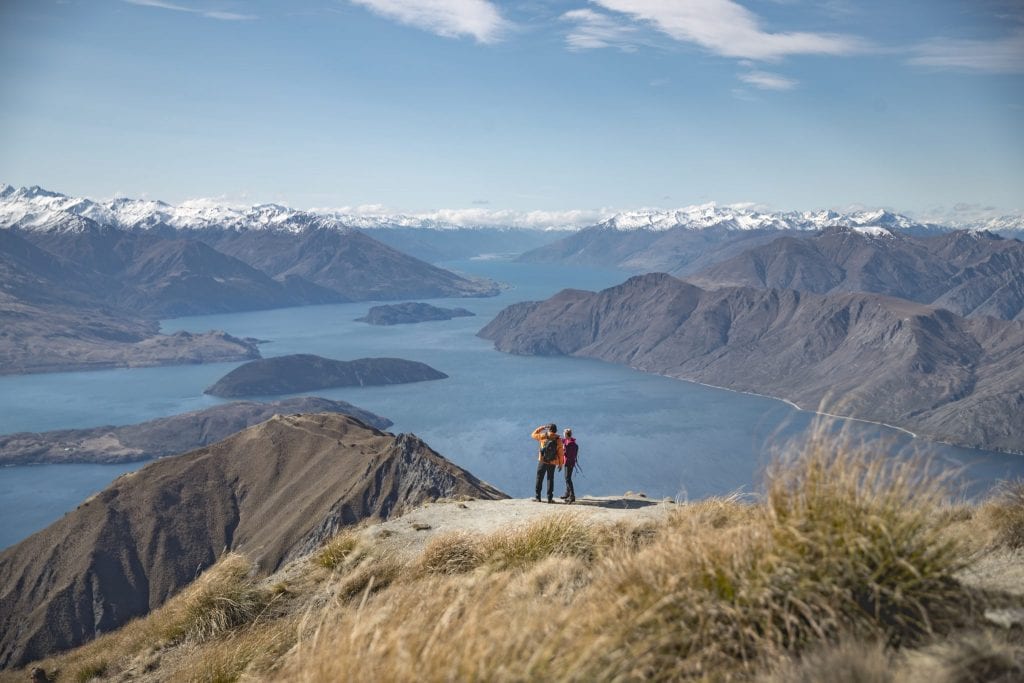Skift Take
New Zealand's latest "traveling under the social influence" campaign could have been brilliant, if it weren't so ill-timed. It's a privilege to be the first to beat Covid, but it can also be a blind spot.
Since Covid, marketers have tackled the enormous challenge of adapting to new messaging while remaining sensitive to the global pandemic’s ongoing toll on human lives and on the travel industry. Some have hit the right tone, while others have come off as confusing.
Pure New Zealand’s campaigns usually land in the former category, boasting unconventional and witty takes that appeal to travelers’ emotions.
But its recent “Traveling under the social influence” marketing videos — part of the “Do Something New, New Zealand” domestic campaign, aimed at discouraging influencer-inspired tourist photos at popular sights — evokes more mixed feelings than praise. It’s a fine line between genius and insensitivity in the current global tourism context.
“We noticed that people were posting similar photos and time again, and we wanted to leverage and use Kiwi humour to encourage people to try new experiences across our country,” Bjoern Spreitzer, general manager domestic at Tourism New Zealand, said in a statement.
“There’s more exciting things to sit on than a rock!,” says comedian Tom Sainsbury in the ad, playing the part of a ranger on “the Social Observation Squad (S.O.S)” who patrols and stops local tourists from taking photos they’ve seen replicated online.
Sainsbury then critiques “middle of the road” and typical Instagram shots, such as a traveler “musing” on a rock, “hot dog legs” or the “Summit Spreadeagle.” New Zealand is clamping down this summer on those who replicate social media shots, the actor adds.
The storytelling is part tongue in cheek, but it begs the question: are we really to believe overtourism is a huge problem caused by locals in New Zealand? Or that overcrowding is an issue at a time when few are able to travel, not least to New Zealand, while most destinations face an indefinite future of undertourism?
“Recommendations from friends and family are highly influential when it comes to travel decisions, by encouraging New Zealanders to share new activities or experiences we are inspiring broader audiences to do something new themselves,” Spreitzer said.
A second video targets the “girl in the road” trend that influencers also made famous, calling it the “run me over risk shot,” while asking “where’s she going without a car?” One of the few viewer comments on YouTube reads: “To a far more rewarding way of seeing & experiencing things. Walk, or bike & feel the difference.”
A third ad in the series addresses Kiwis again but not Aussies, even though New Zealand reopened its bubble with Australia last week. “No contemplative shots,” the actor says in the clip, as he spots a tourist taking a selfie in a popular sight, while jokingly recommending staying indoors to watch a certain comedy act.
After months of lockdown, does it make sense to lecture travelers to not immerse in breathtaking panoramic landscapes when the very nature of being able to travel and being outdoors amid Covid will feel novel?
“The target audience for this campaign was primarily New Zealanders, however we are delighted that the humour and truth behind the video resonated with people around the world, as both our domestic and global audiences have been engaging with the campaign,” Spreitzer said, noting that “[n]ew” means different things to different people and for some it will be visiting somewhere new entirely. “We look forward to welcoming back visitors when the time is right.”
At its core, the intent is to get travelers to rethink influencer type travel shots that keep driving crowds to particular sites in New Zealand, as the country was under threat from rising visitor numbers in 2019. While an important and admirable message for a post-Covid world, it feels way too soon to base an entire campaign on overtourism at this time, even if meant to be humorous, when only domestic travelers and Australians can explore New Zealand. It’s particularly puzzling as well, as New Zealand’s popular outdoor tourist destinations such as Queenstown have suffered from the lack of visitors.
Meanwhile, Australia’s Gold Coast just released a new campaign focusing on Kiwi families and friends reuniting after so many months apart. It feels more on point and sensitive to what all travelers need at this stage, as Covid rages on for most of the world: a sense of optimism and hope that we will all reconnect one day and see new places.
Marketing is hard under the best of times, harder during a pandemic that has decimated tourism across the world. New Zealand has reminded us that it’s even trickier to remain sensitive when you’re marketing a destination that has managed to squash Covid, while affording to remain closed to tourism for almost a year now.
It’s a privilege most destinations, including in the most tourism-dependent, don’t have and won’t enjoy for a long time. Prioritizing social media influenced visits to popular sights over safety and health protocol messaging feels out of context and way too soon, even for New Zealand.
The Daily Newsletter
Our daily coverage of the global travel industry. Written by editors and analysts from across Skift’s brands.
Have a confidential tip for Skift? Get in touch
Tags: coronavirus recovery, destination marketing, tourism, tourism new zealand
Photo credit: New Zealand's latest campaign doesn't want tourists to visit the same places and take social media influenced shots. Miles Holden / Pure New Zealand
